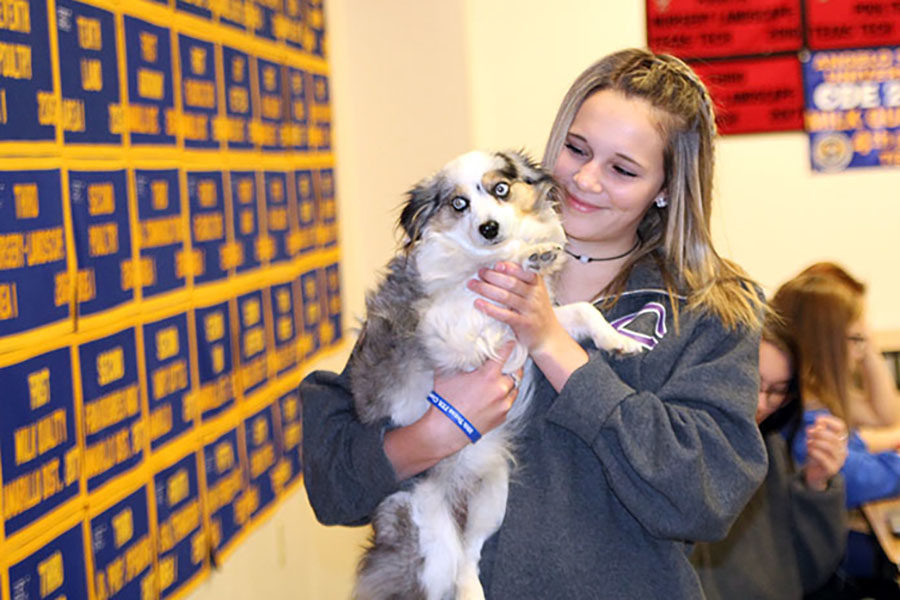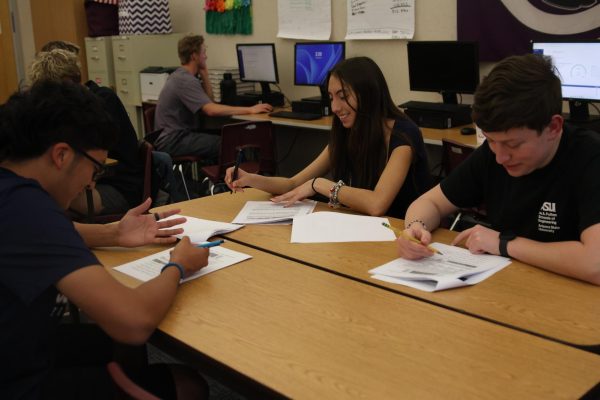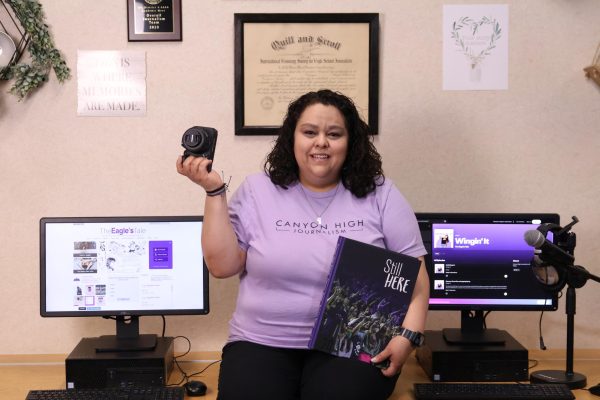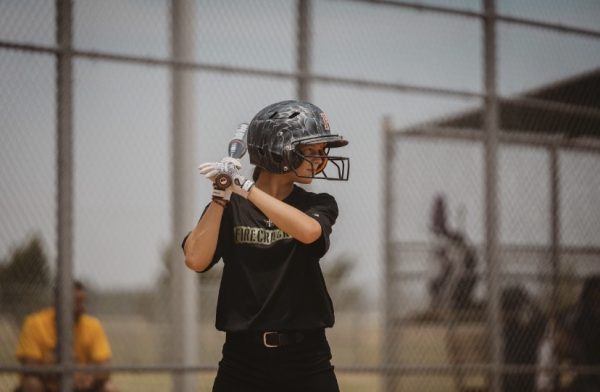Veterinary med students joined by canine friends for class, competition
Sophomore Alissa Reeves cuddles with one of her canine classmates in veterinary medicine class.
As agriculture students walk through the ag building, their expressions light up as they hear the small pitter-patter of their favorite canine classmates’ paws. As veterinary medicine students prepare for their next competition, they are visited by friendly, furry and rarely ferocious dogs.
Vet med students train with live animals in order to be successful at competition, which tests steps used to properly handle and restrain a dog in a clinical setting.
“In the beginning, to get a hang of it, we would practice with stuffed animals,” senior Pecos Swift said. “Then we got to work with dogs, which makes it a lot easier because you know what you are going to get into at competition.”
Although only some vet med students go on to compete, the whole class uses the dogs to learn basic restraints from standing to sitting, as well as venipunctures, which allow a vet or vet tech to draw blood.
“I definitely think it brings a lifelike situation whenever they are here,” junior Cheyenne Lynch said. “We can use them on the skills we use that week.”
The skills team uses the same dogs they take to contest so their handlers can be familiar with the dogs, and they can show them how to behave at contest.
“Having real animals in the classroom does help,” Swift said. “It can also be used as therapy. The dogs should keep coming back to school. Everyone seems to love them.”
Vet med teacher Jennifer Warren said her ultimate goal would be to host clinics where she could bring in dogs from the community and teach basic grooming and training skills to vet med students.
“There’s several programs in the state that are training guide dogs for the blind,” Warren said. “Doing the initial training could definitely be a SAE for students.”
Swift said having dogs in the classroom lightens the mood and creates an environment in which students can more easily focus.
“It helps people with some emotional problems and some mental problems,” Swift said. “Having dogs in the classroom is a really good idea.”

Hey, I’m Sydney Gadberry. This is my first year on staff at The Eagle's Tale. I’m involved in choir and Spanish, and I volunteer at my church. I’m also interested in missionary work. I’ve been on two incredibly life-changing missions trips, one...

Howdy, my name is Madison Matlock! I am a senior, and I am so honored to be a part of The Eagle's Tale staff! I stay very busy competing in FFA competitions. From milk judging to public speaking, I run around the state of Texas advocating agriculture,...










